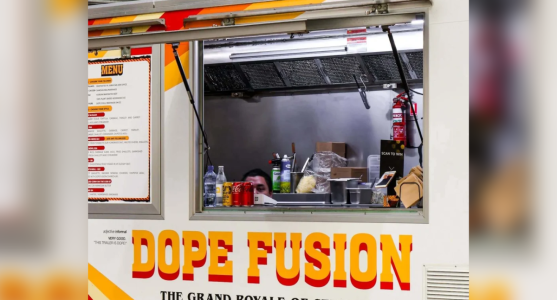Avoid the Big Rip-off: How Australian Stores Are Charging Insane Prices for This American Favorite!
By
Gian T
- Replies 0
As the sun graces us with its presence and the days grow longer, there's nothing quite like the joy of dining al fresco. Whether it's a simple picnic in the park, a hearty meal by a campfire, or a sophisticated outdoor dining experience, food seems to taste better in the great outdoors. And for many of us who have reached the golden years, these moments are the ones we cherish and look forward to.
Food trucks, a concept that has long been a staple in the United States, have made their way across the Pacific and have become a common sight at Australian events, from music festivals to local markets. They bring a sense of novelty and convenience, offering a smorgasbord of cuisines on wheels. But as much as we love the idea of grabbing a quick bite from these roving eateries, there's a growing concern among Aussies over the prices being charged for what is essentially street food.
A recent outcry on social media platforms like Reddit has highlighted the frustration many Australians feel when they compare the cost of food truck fare to that of traditional eateries. 'Ridiculous prices' is a term that's been thrown around, with one festival-goer recounting their experience of paying $14 plus a credit card surcharge for a portion of hot chips smaller than a medium serving from a regular fish and chip shop. A souvlaki at the same event was priced at a staggering $19 plus surcharge.
This sentiment is echoed across the country, with patrons questioning the appeal of food trucks when a short walk down the road could lead to a more substantial meal at a brick-and-mortar restaurant for less money. It's a valid concern, especially for those of us on a fixed income who are always looking for ways to stretch our dollars further.
Olsen Fabricus, owner of the Dope Fusion food truck in Sydney, sheds some light on the reasons behind the high prices. He points out that food trucks often operate with irregular hours, primarily on weekends or during special events, which makes them less appealing to large suppliers. This results in fewer discounts and forces operators to source ingredients from local supermarkets and butchers at retail prices.
Furthermore, the costs of staffing a food truck can be higher due to the need for employees willing to work irregular and short shifts. Add to that the expenses associated with travel, fuel, gas, and the transportation of storage containers, and it's easy to see how the costs can add up quickly.
The food truck scene in Australia is still in its infancy compared to the U.S., where food trucks have become an integral part of the urban landscape, offering affordable and diverse culinary options. In places like New York City, food trucks are not just a means of sustenance; they're a cultural phenomenon that supports immigrant communities and adds vibrancy to the streets.
Despite the challenges, including high operating rates and the arduous process of obtaining permits, some Australian food truck operators have managed to transition successfully to permanent storefronts. However, this comes with its own set of challenges, such as the financial strain during quiet periods and the inability to capitalise on the lucrative event circuit.
So, what can we do as consumers to navigate this landscape of high-priced mobile cuisine? Patience and understanding of the industry's growing pains may be key. As the food truck scene matures in Australia, we may see prices stabilise, and the quality and value of the offerings improve.
In the meantime, it's important for us to be discerning customers. We can support food trucks that offer fair prices and good value, and we should not hesitate to voice our concerns when we feel we're being overcharged. After all, the power of the purse is one of the most effective ways to influence change in the marketplace.
For those of us who love the convenience and variety that food trucks provide but are wary of the costs, it's worth exploring local markets and community events where competition might drive prices down. And remember, there's always the option of packing a delightful picnic basket with your favourite treats and enjoying a meal under the sky, the way nature intended – without the surcharge.

We'd love to hear from you, our savvy senior community. Have you had experiences with food trucks that left your wallet feeling lighter than you'd like? Or perhaps you've found a gem that offers both quality and value? Share your stories and tips in the comments below, and let's navigate the evolving food truck scene together!
Food trucks, a concept that has long been a staple in the United States, have made their way across the Pacific and have become a common sight at Australian events, from music festivals to local markets. They bring a sense of novelty and convenience, offering a smorgasbord of cuisines on wheels. But as much as we love the idea of grabbing a quick bite from these roving eateries, there's a growing concern among Aussies over the prices being charged for what is essentially street food.
A recent outcry on social media platforms like Reddit has highlighted the frustration many Australians feel when they compare the cost of food truck fare to that of traditional eateries. 'Ridiculous prices' is a term that's been thrown around, with one festival-goer recounting their experience of paying $14 plus a credit card surcharge for a portion of hot chips smaller than a medium serving from a regular fish and chip shop. A souvlaki at the same event was priced at a staggering $19 plus surcharge.
This sentiment is echoed across the country, with patrons questioning the appeal of food trucks when a short walk down the road could lead to a more substantial meal at a brick-and-mortar restaurant for less money. It's a valid concern, especially for those of us on a fixed income who are always looking for ways to stretch our dollars further.
Olsen Fabricus, owner of the Dope Fusion food truck in Sydney, sheds some light on the reasons behind the high prices. He points out that food trucks often operate with irregular hours, primarily on weekends or during special events, which makes them less appealing to large suppliers. This results in fewer discounts and forces operators to source ingredients from local supermarkets and butchers at retail prices.
Furthermore, the costs of staffing a food truck can be higher due to the need for employees willing to work irregular and short shifts. Add to that the expenses associated with travel, fuel, gas, and the transportation of storage containers, and it's easy to see how the costs can add up quickly.
The food truck scene in Australia is still in its infancy compared to the U.S., where food trucks have become an integral part of the urban landscape, offering affordable and diverse culinary options. In places like New York City, food trucks are not just a means of sustenance; they're a cultural phenomenon that supports immigrant communities and adds vibrancy to the streets.
Despite the challenges, including high operating rates and the arduous process of obtaining permits, some Australian food truck operators have managed to transition successfully to permanent storefronts. However, this comes with its own set of challenges, such as the financial strain during quiet periods and the inability to capitalise on the lucrative event circuit.
So, what can we do as consumers to navigate this landscape of high-priced mobile cuisine? Patience and understanding of the industry's growing pains may be key. As the food truck scene matures in Australia, we may see prices stabilise, and the quality and value of the offerings improve.
In the meantime, it's important for us to be discerning customers. We can support food trucks that offer fair prices and good value, and we should not hesitate to voice our concerns when we feel we're being overcharged. After all, the power of the purse is one of the most effective ways to influence change in the marketplace.
For those of us who love the convenience and variety that food trucks provide but are wary of the costs, it's worth exploring local markets and community events where competition might drive prices down. And remember, there's always the option of packing a delightful picnic basket with your favourite treats and enjoying a meal under the sky, the way nature intended – without the surcharge.
Key Takeaways
- Food trucks in Australia are experiencing high prices, which has caused some customers to question their appeal compared to traditional restaurants.
- Olsen Fabricius, owner of a popular food truck, attributes the high prices to factors such as irregular operating hours, less attractive discounts from suppliers, higher staff wages, and transportation costs.
- Food trucks are valued for their novelty and contribution to community and culture, but they also face challenges such as obtaining council approvals and competing with brick-and-mortar establishments.
- While food trucks are an established phenomenon in the USA, offering a range of affordable cuisines, the industry in Australia is still in its early days and facing unique challenges post-Covid.








